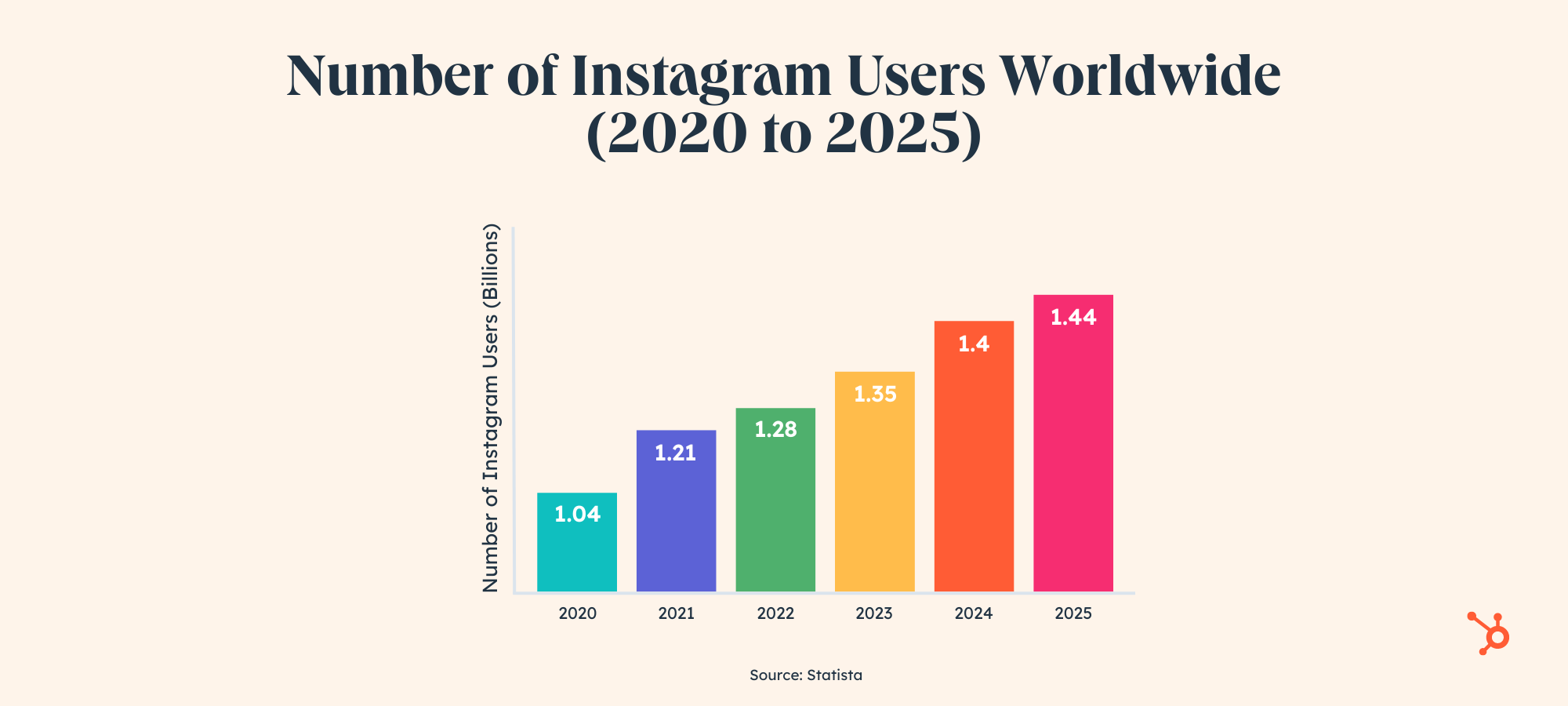It only takes a few scrolls on Instagram to see the platform is changing. Photos are out, Reels are in. Chronological feeds are out, algorithm-selected feeds are in. And the list goes on.

But are these changes enough to cause users to jump ship? And if so, what does this mean for your social media marketing?New Data: Instagram Engagement Report [2022 Version]
Let’s take a closer look at where Instagram could be headed in 2023 and beyond.
Is Instagram dying?
What does it mean when a social media platform “dies?” Typically, it means falling behind in several key areas — namely, user growth, engagement, and relevancy.
Is this the case for Instagram? The short answer is no. Instagram isn’t dying. At least, not for everyone.
Now, I’m not saying Instagram is the hottest platform out there, or that it’s free of any issues. But the platform itself is far from over — and here’s why:
User growth
Instagram has a massive user base, and it’s still growing.
It recently surpassed two billion monthly active users, joining an elite club with Facebook and WhatsApp. It continues to climb year-over-year, expecting to reach 1.44 billion users by 2025.
While its growth isn’t at the same level as years prior, it’s still inching in the right direction for the foreseeable future.
Influence with Millennials
Instagram is the sweet spot for Millennials. It’s not as mature as Facebook — but not as trendy as BeReal or TikTok.
Unsurprisingly, a high concentration of Instagram’s audience belongs to Millennials, even securing first place as their favorite social media app last year (Gen Z agreed).
Compared to other platforms, Instagram still holds influence with those under 35. The challenge, however, is appealing to its primary audience while evolving the platform enough to appeal to younger generations (but more on that later).
.png?width=2000&height=800&name=Is%20Instagram%20Dying%202022%20(3).png)
What about low engagement?
Across the board, brands, influencers, and every day users report low engagement on Instagram. While disheartening, it proves that what used to work on Instagram is definitely dead.
Instagram has made no secret that short-form video is a top priority these days. After all, it’s competing with the likes of TikTok and Snapchat. But if you’re still using Instagram like it’s 2012 (valencia filter and all), your engagement will continue to suffer.
We’re in the next evolution of Instagram, where static photos are out, and Reels and Stories are in. In fact, engagement for static photos has decreased by 44% since 2019, around the time Reels made its debut.

For those pivoting to Reels, engagement has remained consistent — even skyrocketing for some creators.
HubSpot spoke with one such creator, Kar Brulhart, who gained 13,000+ followers within a month by posting Reels. She estimates 75% of her audience comes from this type of content.
All this to say, Instagram is a different platform than it was a decade ago. The algorithm is evolving, along with the content that sparks engagement — and marketers must keep pace.
Okay, but is Instagram still cool?
Every social media platform needs some degree of relevance to survive. I call it “the coolness factor.”
Many people think Instagram has lost its “coolness factor,” so it must be dead. While Instagram is no longer at its height of popularity, it doesn’t have to win the popularity contest to stay in the game.
Take a look at Facebook. For the past decade, people have said Facebook is dead. Yet, it’s the most popular social media platform worldwide right now, attracting more than 2.89 billion monthly active users. Yes, it’s losing steam with younger demographics, but it’s maintaining relevance with its key audience: Millennials, Gen X, and Baby Boomers.
In fact, a whopping 91% of Baby Boomers, 88% of Millennials, and 83% of Gen X-ers have visited Facebook in the past three months, according to HubSpot’s 2022 Consumer Trends Report.
To stay afloat, Instagram must maintain relevance with its key demographics while, at the same time, evolving the platform enough to stay competitive and attract the next generation. Only time will tell if they can pull this off.
Is Instagram an effective marketing channel in 2023?
Back in the early days, Instagram kept its platform primarily ad-free. When Facebook bought the platform in 2012, however, its advertising machine shifted into high gear.
The commercialization of Instagram, while disappointing to some, has made it a marketing goldmine.
90% of Instagram users follow at least one business, and a growing number of consumers are starting to shop via social media. It’s no surprise that Instagram is ramping up its e-commerce capabilities.

Instagram is also thriving in the influencer marketing space. Last year, it was the most-used platform for influencer marketing in the U.S. – and more marketers are planning to use Instagram for their campaigns in 2023.
To top it off, more than half of video marketers ranked Instagram as the best platform for ROI, engagement, and lead generation last year.
Putting It All Together
It’s too early to ring the alarm bells on Instagram. Its user base is still growing, and it has great reach with people under 35. However, there’s no denying that Instagram as we know it is dead, and marketers must adapt.